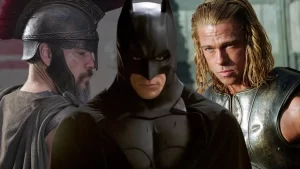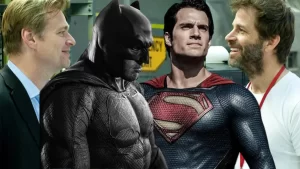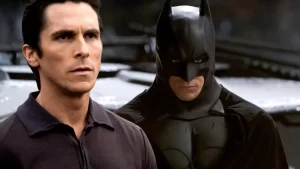Bringing Even More Credibility to Sci-Fi
A Film Review of Interstellar
Is Christopher Nolan waging a losing battle to save the art of Hollywood-style filmmaking? His most recent contribution to humanity’s collective creativity is yet another fine example of thought-provoking and entertaining storytelling via the finest audio-visual technology the good folks at Syncopy can provide. Yet, amidst a sea of adaptation, rebooting and reimagining at the movies, the one detail about this film which is most unique and will be easily overlooked is Interstellar’s originality. It is a story written by talented screenwriters Chris and John Nolan based on the theoretical physics of Kip Thorne (who also happened to be the scientific consultant and producer for this film). When people complain about Hollywood’s cycle of regurgitated drivel that is based on X or inspired by Y, my recommendation would be to check out a Chris Nolan picture that isn’t a part of The Dark Knight Trilogy (for which he’s best known). Sure, he doesn’t have the extensive library of the Steven Spielberg’s or the Ridley Scott’s, but his selectivity permits an investment in multiple levels of the filmmaking process for just about every project he helms. It’s what makes him one of the last remaining auteurs in this business. Nolan does it his way, and his narrative imprint is neither a constrictive millstone nor is it an overbearing hammer, but more like a key unlocking doors to new perspectives and scenarios outside of the mechanical mass production of formulaic filmmaking.
As much as I enjoyed Interstellar, the one thing I fully expected from this film (which I ultimately did not experience) was the definitive “IT” factor making it the hands down best film of the year. Certainly, this is a situation where expectations can skew an experience as I was all but banking on the path Gravity (2013) paved for Oscar gold last year in the same way Moulin Rouge (2001) set up genre success for Chicago one year later in 2002. As interesting as the plot is, as compelling as the characters endear and as visually stimulating as the effects impress, the story exposes a major hurdle that the audience can trip on: pacing. “Adrenaline fueled roller coaster ride” is not something that would accurately describe Interstellar as a cinematic adventure. The first third of the runtime is devoted to heavy exposition and a bevy of set-ups. For this particular story, all of that groundwork is necessary for every single plot and thematic payoff that comes later on, but it is somewhat of a grind; so much so that people in the theater started engaging each other in small talk. As much as I absolutely cannot stand people talking in the movies, the lack of activity and intrigue early on tempts distraction.
The film’s second act features a significant increase to the stakes and the dangers which helps bring the audience back, but the narrative never sways from the concept of saving humanity as a species. Just about everything from metaphysics, morality, conservation, sacrifice, faith, family, evolution (and a multitude of other themes and ideas) are touched upon because this film claims that just about everything that defines humanity is as connected to our salvation as we are to each other as individuals as we are to our environments. I applaud the script’s ambition because these ideas are extrapolated from the fantastic, yet easily relatable scenarios that are presented thanks to some good characters and great performances. The story does shift gears a second time during the third act which may present problems for some members of the audience not willing to take leaps of faith to get past a few plot gaps. The action and conflict of the story become less about actual characters and realistic situations and become much more ambiguous and theoretical. It’s at this point the story “transcends time and space” and while it is extremely interesting to view this different dimension, reality, form of thinking, experience of reality (or however you want to describe it); reconciling it with the rest of the story proves a challenge unless one simply accepts and moves on. Fighting it by searching for some logical explanation for where the story wants to go may seem natural, but at that point in the story the rules of “reality” are out the window and should be viewed as such. Those in the audience that can “make the jump” may find a hopeful and inspiring ending while the rest may find an ending that is contrived and convenient. This moment could very well sweeten or sour the entire 2 hour and 49 minute film; no pressure.
Even if you don’t know what it is you are actually looking at on the screen, the visual effects at work during Interstellar never cease to impress. Science fiction as a genre has presented a number of notable, visually effect driven pictures so there have been a number of concepts that have been rinsed and repeated. I would say the same holds true for the basic “space flight” depictions of this film. Ships enter and exit atmospheres in similar ways, they spin to simulate gravity, and the hull gets breached by debris or other external forces. All of that you’ve seen before. What you haven’t seen are some of the more amorphous spatial phenomena depicted in the manner they have been here. We’ve seen wormholes in movies before as “pockets” and “funnels” of space/time that a vessel goes “into” but Interstellar presents it as a large, three dimensional sphere that a vessel “orbits” in order to cross into another galaxy. We’ve seen singularities (or black holes) before, but never quite on a massive scale that dwarfs the size of the sun in comparison. The process of entering a black hole in this film (warping, bending or otherwise destroying matter and light) takes a “less is more” approach by focusing on the subject which never breaks physical form and surrounding it with shear emptiness. Then there’s “the next dimension” which I won’t spoil any further by describing it as infinitely abstract art. All of these effects are masterfully crafted which reveal and obscure exactly what the director wants. Above all, these effects attempt something different from the status quo which is most welcome.
Despite Nolan’s literary and technical wizardry in his films, he still manages to extract intense emotions and marquee performances from his casts. Despite some of the fantastic scenarios his films are involved with, his need to ground them in reality by making it “feel” as real and relatable as possible to his cast allows for greater opportunities to connect with and relate to a larger range of viewers. The same holds true for the cast of Interstellar. Cast members from The Dark Knight Rises Anne Hathaway and Michael Caine return here as a father/daughter physicist duo that’s part of a greater team dedicated to saving humanity. Their particular dynamic isn’t expressed by direct chemistry because the story doesn’t have them sharing the same space, but their individual performances evoke intense passion and even desperation for characters that are lifelong scientists. Jessica Chastain plays Murph, a talented scientist, but an even more devoted daughter whose research is motivated by love and less by equations. Murph’s journey as a character is a much more personal one which is defined by a series of disappointments, thus Chastain is called upon for several instances of anger and frustration without completely flying off the hinge. The rest of the cast is equally impressive with very limited screen time (thank you John Lithgow), just be prepared to see a few A-List cameos drop in playing roles you never saw coming which are very happy surprises.
Of course, Matthew McConaughey plays Cooper, our protagonist and one of the better everyman characters I’ve seen in recent years: a man of machines as well as the land, a trailblazing explorer as well as family man, a man of unfulfilled promise as well as the excellence of execution. Playing a great man that hasn’t done anything great in his own eyes is a challenge well suited for McConaughey’s natural persona (do I need to reference last year’s Oscar acceptance speech?). Once again, his droll, the timing of his delivery and his desperate need to emotionally exhaust himself in just about every scene makes his characters easy to like, sympathize and identify with. Not enough can be said of his performance in this film because it is absolutely vital to the audience’s experience. Only his character gives the audience a window to every event and without that character being someone every viewer can get behind, this film fails. Despite the slow start to this movie, every minute spent is used to endear Cooper to us and McConaughey nails every scene.
If Interstellar were a film that was more accessible to a wider demographic of moviegoers (and fleeting attention spans), the momentum for an Oscar victory would be an unstoppable force. As it stands, it is not a movie for everyone despite all of its impressive accomplishments and must therefore be considered as an immovable object when being considered for some of the best examples of filmmaking this year. This movie’s format and story can have stretches that may lose viewers who are not fully engaged. It also discusses subject matter regarding humanity, its nature, its purpose and its direction that may be uncomfortable if not divisive for people of today to discuss or deal with at any level. However, this film asks those questions in an intelligent, thoughtful, creative and dramatic way that simply dismissing it without giving it a chance would be downright criminal. I loved this movie for everything it showed me onscreen and every image it meant to parallel in real life. It may not end up being the best film of the year, but it cannot be missed if you are in the mood for a tantalizing adventure that electrifies the eyes, tickles the fancy and resonates with the soul.







